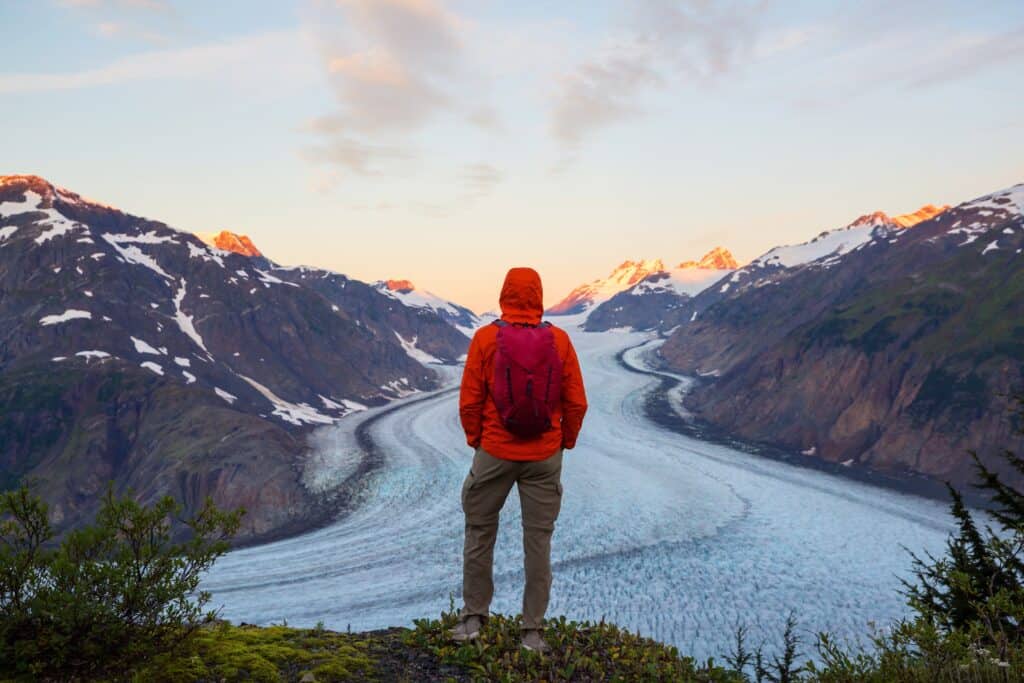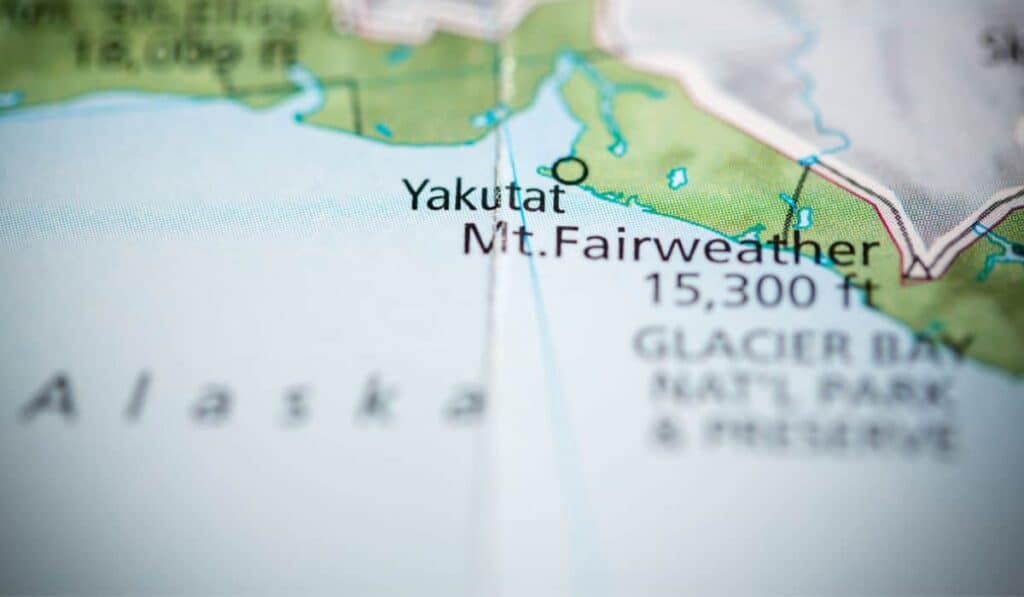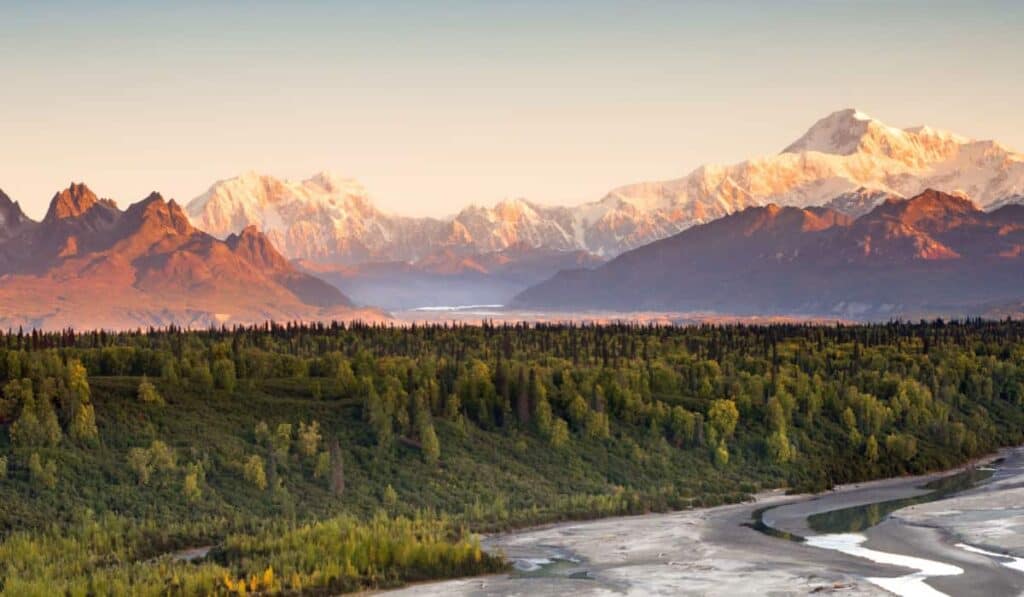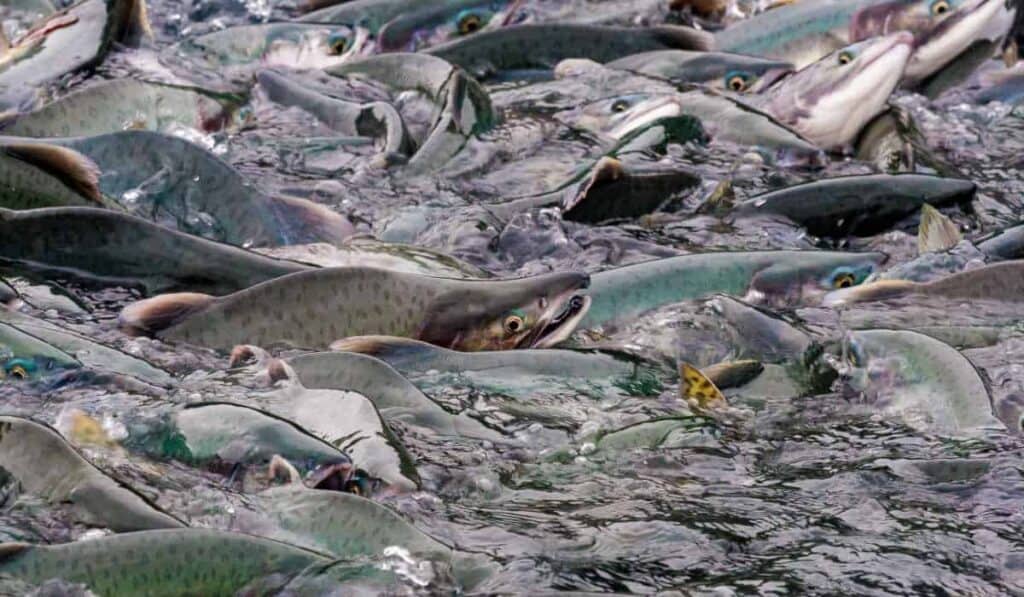
Hyder, Alaska
Hyder is an extremely unique town of 48 people (give or take) on the Alaskan mainland, just a few miles from Stewart, British Columbia, Canada.
Nestled on the eastern edge of the Misty Fjords National Monument in Alaska, Hyder is a town steeped in history and natural beauty. As the state’s easternmost community, Hyder enjoys a unique relationship with our Canadian neighbors across the border in Stewart, British Columbia. Despite our small year-round population, we embrace the connection to our larger North American context, offering visitors a blend of U.S. and Canadian influences. Hyder’s past is marked by the boom of a gold rush in 1898, transforming us into what some now refer to as “The friendliest ghost town in Alaska.”
Over 100,000 people visit Hyder each year to take in the rugged and stunning scenery including one of the main attractions, Salmon Glacier.
There is also excitement to be found in the favorite activities of locals such as hiking, bear-watching, fishing, and other outdoor exploring.
The town’s offerings are not overly complex when it comes to infrastructure but, if you plan in advance, you’ll have a place to stay and the freshest halibut sandwich possible served at “The Bus” a local eatery.
General Background
Hyder is a peculiar town in that it is legally part of Alaska, but culturally and practically, it is more Canadian than American.
It is the only place in Alaska that doesn’t use the 907 area code for phone calls, using the British Columbian 747 prefix instead.
A large part of Hyder’s appeal to visitors is the ability to drive to Alaska from Canada while avoiding the poorly maintained AlCan Highway to Skagway.
For this reason, many long-distance motorcyclists visit Hyder, as it gives them the ability to visit 49 of the 50 states in a short period of time.
One of these groups, The Iron Butt Association, brings thousands of visitors to Hyder every year.
Another peculiarity of Hyder is that it is the only place on the Canadian border where visitors can legally cross into United States territory without having to go through customs.
The US Border Patrol once had a post in town, but it closed in 1970. Canada, however, does maintain a border crossing post on the edge of town.
The town’s power, medical services, and emergency/fire services are provided by the nearby town of Stewart.
Hyder once had its own fire department, although it was accidentally burned down by a fireworks incident in 1996, along with the city’s only fire truck.
Things to Do in Hyder
Perhaps the biggest attraction is the Fish Creek Wildlife Observation Site, just a few miles north of town.
It is considered one of the best places in Southeast Alaska to see bears in their natural habitat, as they feed on fish in the Salmon River.
The nearby Salmon Glacier is the world’s largest glacier that is accessible by road, larger even than the Mendenhall Glacier in Juneau.

In the city center, one of the longest-running traditions enjoyed by visitors and residents alike is “getting Hyderized” at one of the local bars.
The process involves drinking a shot of 151-proof Everclear at one of the two participating local bars. Those who do are then given a certificate by the bartender certifying that they have officially been “Hyderized.”
The Hyder Community Association has run a museum and information kiosk on Main Street for over 40 years. The city of Stewart also operates a museum that includes information about Hyder.
How to Get to Hyder
Hyder is one of the few places in Southeast Alaska that has road access to the outside world as it is one of only a few that is not on an island.
The only road access to Hyder is through the British Columbian city of Stewart, only about two miles down the road (on Highway 37A). It’s worth noting that Hyder is somewhat unique as there is no connection via road to any other cities in Alaska.
The only boat access to Hyder is by private ship or a charter, as the Alaska Marine Highway discontinued its service to Hyder in 2001.
There is no airport for wheeled aircraft in town, although Hyder Seaplane Base does allow for float plane access to town. For those of us looking to fly, the closest major airport is in Ketchikan. From there, you either charter a private boat or opt for a local air service like Taquan Air to ferry you over the Portland Canal. If you’re new to Alaska, just know that travel is at least half the adventure.
For another option, Taquan Air flies passengers from Ketchikan three days a week. This is also how residents of Hyder receive their mail.
You can also just take a leaf out of this book and plan a 60-hour drive to Hyder…
Best Time To Visit
The optimal period for our visit falls between late spring and early autumn. Specifically, May through September offers us milder weather and accessibility to the town’s attractions like the renowned Salmon Glacier. This timeframe also aligns with the season of operation for local accommodations such as the cozy Glacier Inn.
During this peak season, we take advantage of the extended daylight hours and engage in various recreational activities including fishing, bear watching, and exploring the scenic vistas that define the Alaskan Panhandle. Remember, no matter when we decide to travel, Hyder’s unique charm is ready to be discovered.
Where to Stay, Shop, and Eat
There are a few hotels in the city, including the Grandview Inn, The Sealaska Inn, and the Manley Lodge.
Just know that, when it comes to accommodations, options in Hyder are limited, so we recommend booking your stay in advance.
Camp Run-A-Muck, an RV park that also offers tent sites, is located on Hyder Avenue around the city center.
There are several gift shops in town, including Caroline’s Boundary Gallery and Gifts and The General Store.
The Bus is a seafood restaurant in the city center that mostly serves seafood and cheeseburgers. As the name suggests, it is built out of a converted school bus. You can also check out the famous Toastworks although it is actually located in Stewart.
The two bars in town, The Sealaska Bar and The First and Last Chance Bar, were originally built as saloons during the town’s mining days and both have operated continuously since that time.
Nitty Gritty Travel Tips
The first time I visited Hyder I had several questions that I could not find the answers to anywhere. Some I was able to get answered by a friend in Juneau who had visited Hyder recently, the rest I just had to figure out as I went.
To that end, here are a few useful tips that I picked up that would be useful to anyone visiting Hyder:
- Be sure to carry appropriate identification like a passport, as entry into Hyder from Stewart, British Columbia, involves crossing an international border. Although there is no U.S. Customs presence, Canada Border Services has immigration control on the return to Stewart.
- Hyder operates on Alaskan time and uses the United States dollar, but Canadian currency is commonly accepted given the town’s proximity to Canada.
- Electricity is standard US voltage, so no need for adaptors for U.S. travelers.
- Those looking to explore the nearby Tongass National Forest should prepare for rugged conditions and pack accordingly.
- You won’t find a ferry service directly to Hyder, so plan for either road travel or arrival by sea to a nearby port followed by road travel.
History of Hyder
Hyder is perhaps the only community in Southeast Alaska that was not traditionally used by the Tlingit people, presumably due to its location. It was instead used as a hunting ground by the Nisga’a of Canada.
During the Alaska-Canada Border Dispute of the late 1800s, Hyder was part of the disputed area claimed by both countries.
Since Canada was a full member of the British Empire at the time, England was in charge of Canada’s foreign policy.
In an attempt to improve relations between the British Empire and the United States, England offered many concessions to the United States, including the territory now known as Hyder, much to the chagrin of the Canadians.
Hyder was established in 1907 under the name Portland City, named after the nearby Portland Canal.
After the post office was established in 1914 and the town’s residents were informed that there were many towns across the country with that name, it was changed to Hyder.
Hyder was originally built as a mining town, both for the city’s mines and because of its location, it was the only practical access point for the silver mines in British Columbia at the time.
Hyder experienced a boom in the 1920s, although the mines eventually dried up and all significant mining activity had disappeared by 1950. The city mine closed in 1956.
Today, Hyder is a proud tourist town that invites visitors to enjoy one of the most unique towns in Southeast Alaska, and can’t wait to welcome you on your next drive through British Columbia!






